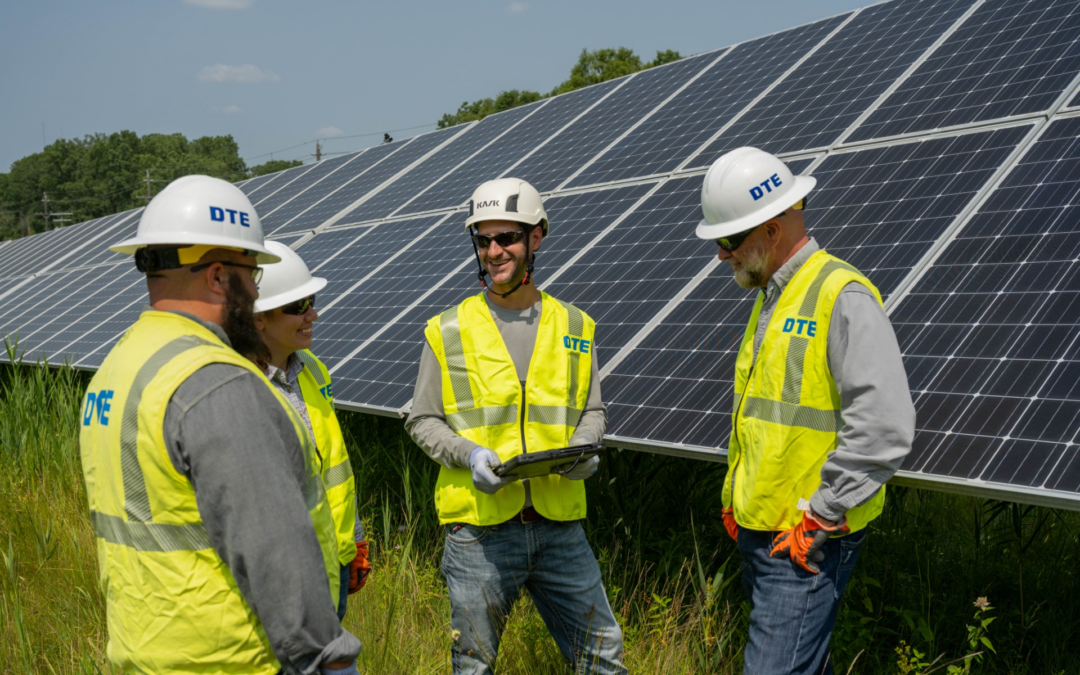MYTH: Solar panels contain harmful chemicals, have toxic runoff and poison the soil.
FACT: Solar panels are not toxic and do not pose risks to the surrounding environment during operations or during removal and disposal. The primary material in the solar panels used by DTE is silicon, the second-most common element on earth and found in most consumer electronics, from cell phones to computer chips. Other components used in solar panels include boron and phosphorus, which are also non-hazardous to the environment and human health.
MYTH: Solar parks cause farmland to be unfarmable forever.
FACT: Land can be reverted to agricultural use at the end of the operational life for solar parks. The life of a solar park is roughly 25-35 years and can provide a recovery period, increasing the value of that land for agriculture in the future. Giving soil rest can also maintain soil quality and contribute to the biodiversity of
agricultural land.
MYTH: Solar parks do not generate additional revenue for local communities and only financially benefit those that have signed an easement.
FACT: Communities that host solar parks see substantial benefits in the form of local tax revenue, which provides funding for police, schools, roads, and other vital community services. Solar parks also bring between 100 and 200 jobs during construction along with additional economic benefits to the surrounding community.
MYTH: The presence of a solar park will raise your electric rates.
FACT: Electric rates will remain consistent amid new solar park developments. DTE is looking to construct new solar parks in Michigan to support its expanding variety of renewable energy voluntary customer offerings. If any additional costs result from new solar parks, they would only be applied to customers of DTE Electric that voluntarily subscribe to one of these programs.
MYTH: Solar panels produce a lot of disruptive noise and glare.
FACT: The connection boxes and inverters used in solar parks do emit some noise, but it is generally only audible when standing near the equipment and is similar in volume to background noises. Most solar layouts aim to centralize inverter locations, putting them well inside the fence line of the project and limiting exposure. With proper design and siting, glare from solar panels can be effectively mitigated. Some methods include the use of anti-reflective coatings and glass texturing for PV modules and the use of blinds and screens through landscaping.
MYTH: Solar parks endanger local wildlife.
FACT: Solar parks do not present a risk to local wildlife, including birds, deer, and other animals. In addition, it’s becoming increasingly common for solar developers to plant wildflowers within their arrays, creating habitats for bees and other pollinating species whose natural habitats are rapidly disappearing.
MYTH: The presence of a solar park will decrease nearby property values.
FACT: Property value studies of solar parks in various states conducted by third party experts have shown that large-scale solar arrays do not decrease property values of adjacent properties, and in some cases may even have positive effects. This is consistent with the fact that solar parks are generally considered to be compatible with agricultural districts. Solar parks provide a reliable revenue stream to farmers, while preserving farmland for future use and preventing sprawling residential development.
